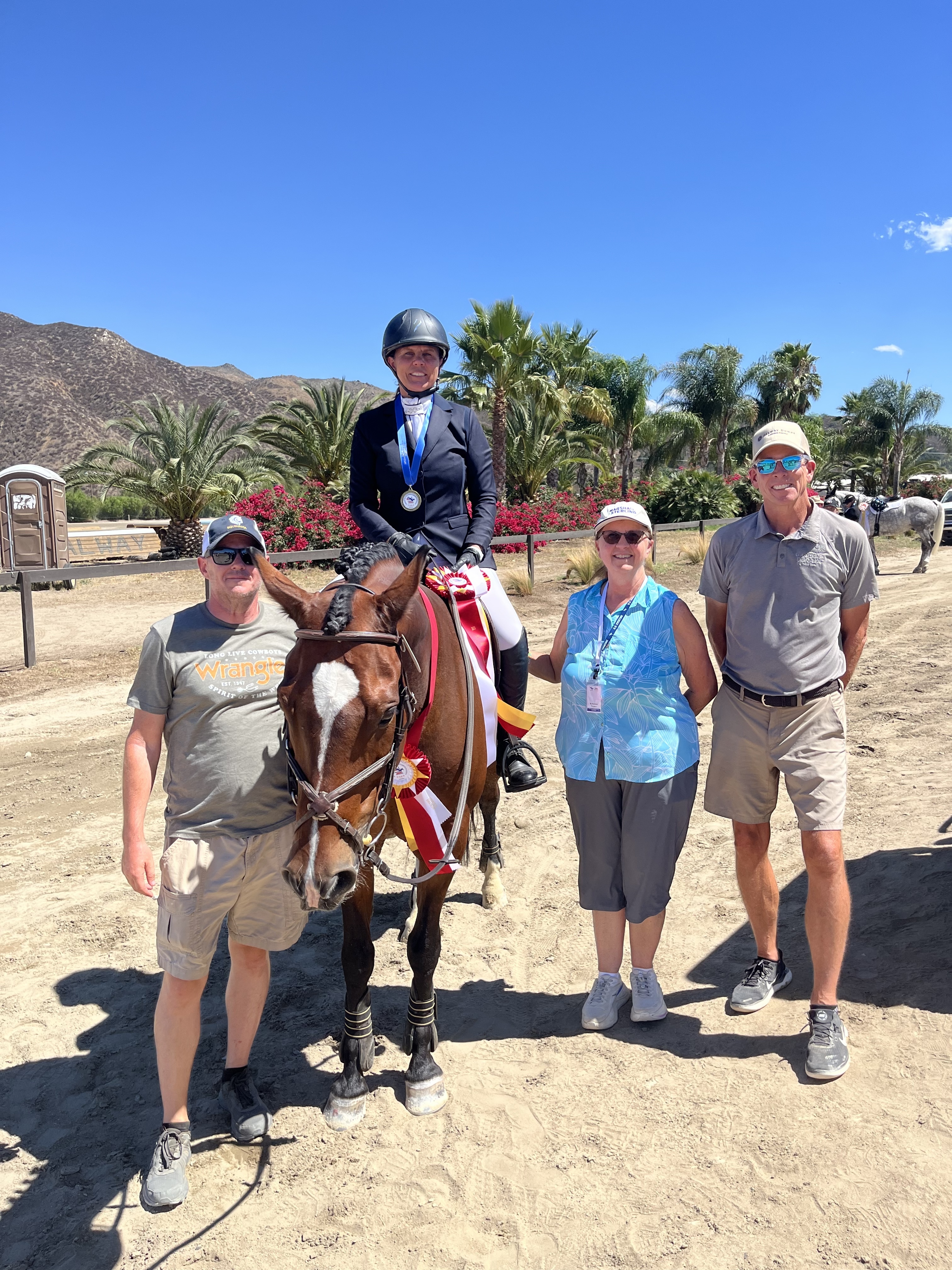All About the Volunteer Coordinator

You’ve heard the saying, “without volunteers, the show wouldn’t be possible.” Well here are some fun facts about the 2025 USEA American Eventing Championships volunteer pool:
- 102 individuals volunteered their time (over 7 days)
- 69% (70) were local volunteers / 32% (32) were out of state
- 59% (60) had never before volunteered at Galway Downs
- Our top 10 volunteers put in between 27 and 55 hours each!
- For a total of 1267 Volunteer Hours
*These numbers do NOT include the volunteer coordinator hours.
I am Jerri Lance, part of the Volunteer Coordinator Team for Galway Downs in Temecula, California. Our team manages the volunteers for horse trials, dressage, and schooling shows throughout the year. Managing volunteers is truly a team effort—even this article was a collaborative project! At Galway, we are fortunate to have a fantastic team of individuals who work seamlessly together to make sure the show has the volunteers needed to run smoothly. The core Volunteer Coordinator team includes myself, Bernie Low, Thamar Draper, Laura Jaeger, and Danielle Trynowski.
While our job includes managing schedules and filling shifts, it is really about supporting people, problem-solving, and fostering a sense of community united by a love of horses. Collaboration is essential because everyone contributes unique strengths such as organization, communication, or keeping up morale. Delegation ensures no one person is overwhelmed, and open communication keeps us on track, even when the unexpected happens. Together, we’ve learned that good leadership is about supporting one another and creating an environment where volunteers can succeed.
Having multiple coordinators means we can divide responsibilities, help each other, and step in where needed. When one of us is stretched thin, another can pick up the slack, which helps keep the event running smoothly and the stress manageable. No two events are ever the same, and challenges come up that require quick adjustments—like covering for a missing gate steward or finding extra help for a busy warm-up ring or making sure everyone has had lunch (very important!). One of the most important skills of a coordinator is being able to make quick decisions as well as being flexible enough to understand how to move volunteers where they are needed.

Valuing our volunteers is key. Many of them give up their weekends or take time off work to be there. We have found that a simple thank you, a smile, or a word of encouragement goes a long way in keeping morale high. We make it a point to support and recognize them regularly. And at the end of the day, volunteers asking about the next show and returning each year shows our teams’ success.
Depending on the size of a show, the coordinator’s work will typically begin several weeks to a month prior to the event. The first step is collaborating with the show organizer to gather key details—such as the proposed schedule, course maps, number of dressage arenas and judges, or the number of show jump rings. Each coordinator is then assigned a primary area to lead for the weekend—cross-country, dressage/show jump, or check-in/hospitality. Of course, flexibility is essential, and we often share volunteers and support one another across different areas as needed.
When the show schedule is determined (even if in draft form), planning and recruiting volunteers can begin. Online tools are used for volunteer signups making it easy to review and check the status of open positions leading up to the show. This data is then converted into spreadsheets which the coordinators use for checking in and assigning (or reassigning) volunteers during the show. Updates to the spreadsheets are made daily throughout the show to accommodate cancellations or additions.
Prior to the show, we are on-site taking care of last-minute details such as checking supply levels and driving the cross-country course to familiarize ourselves with the fence locations and their groupings for best placement of jump judges. Once we have the cross-country jump assignments, jump judges are assigned based on their skills and stated preferences. We then prepare bags for the jump judges ahead of cross-country day.
While coordinating can be challenging, it is highly rewarding when the volunteer community participates and helps ensure the success of the show! Having a team of coordinators enables us to distribute responsibilities effectively and allows for necessary breaks throughout the year, which is essential for preventing burnout.
After the show we ensure that all volunteers hours are accounted for and tracked. Each volunteer is contacted to show our appreciation of their effort, and to ensure they are aware of any upcoming shows.
Volunteer coordinators are needed everywhere, and there are always opportunities to get involved. If you have ever been even a little curious, reach out to your local organizers to see how you can help. And if you’re in our area, we would love for you to consider joining our growing team of coordinators!














